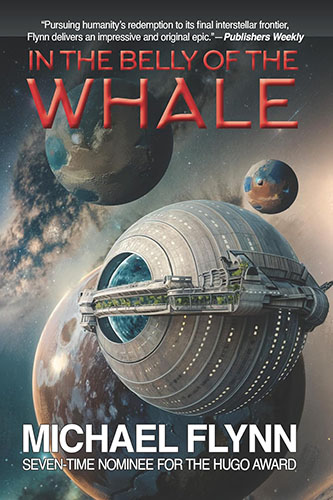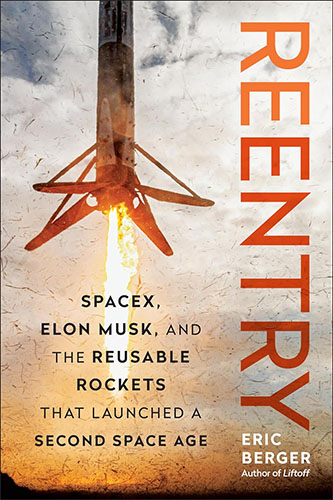Category: Nonfiction
Reviewed by: John J. Vester
Title: Nuclear Rockets: To the Moon and Mars
Author: Manfred “Dutch” von Ehrenfried
Format: Paperback/Kindle
Pages: 270
Publisher: Kindle Direct Publishing
Date: April 2023
Retail Price: $43.95/$9.95
ISBN: 979-8377421252
Find this book
The first thing you’ll notice about this book is that it is loaded with front and end papers, consuming half of the book’s 300 pages. Aside from the title page and an intimidating copyright notice, there’s a Frontispiece, a list of books by the author, a Dedication, Acknowledgements (a long list of people and places involved in nuclear rocket research), two Forewords, a Preface and an Introduction (aka Chapter 1). Following the main part of the book, there are six large Appendices, 23 Biographies of major players in the field, “References” (a bibliography), a Glossary (a key to acronyms, actually), a “Terminology” (explanation of a very few key words or phrases), an extensive “About the Author” (which is worth reading first), and an Index.
Manfred “Dutch” von Ehrenfried’s resumé will assure the reader that the author knows whereof he writes. Respect for the author, however, does not obscure the book’s shortcomings. A note on the title page states that the book was published with the help of Kindle Direct Publishing: so a self-published book, it appears. The fact that no editor is credited indicates that the book did not benefit from editorial scrutiny. And it shows.
To begin with, numerous passages sound as if taken from promotional materials of teams working on nuclear propulsion, or from proposals for securing contracts or funding. There are instances where quotation marks seem to have been forgotten and the author appears to be speaking in the first person as a member of one team or another carrying on the research.
It will surprise the reader to learn how many government, military and private sector programs there have been and are currently devoted to creating a nuclear propulsion system that will succeed in a so-called “baseline mission” to Mars in 2039. The reader might also be overwhelmed at the sheer number of programs reported on, and at the tidal wave of numeric data associated with each piece of hardware mentioned. But a focus on presenting, individually and sequentially, the many domestic and foreign programs results in repetitious statements about reactors and related equipment.
On the plus side, the book is as current as today’s newspaper. Its scope is broad and all-inclusive. It provides enough information for any job seeker or journalist to be able to contact major figures or institutions conducting any of the programs described. As a reference work, Ehrenfried’s effort clearly has a place as a reference work, but is not designed for the average reader. It is a comprehensive survey of the field aimed at engineers. Light on explaining basic concepts, heavy on hardware, the book is drenched in specifications and numbers.
The basics are easily told, though. Space applications of nuclear power are either for producing electricity or for propulsion. To produce electricity, there are RTGs (Radioisotope Thermoelectric Generators). They have powered deep space probes since the 60s and, more recently the Cassini, Galileo, and New Horizons probes, and rovers on Mars—any place where the sunlight is inadequate for solar panels. For a more complete telling of the RTG story, see Appendix 5.
As for nuclear propulsion, there are two flavors: NTRs (Nuclear Thermal Rockets) which use the heat of nuclear decay to expel a fuel from the rocket nozzle at speeds that chemical rockets cannot achieve. The trade off is that the thrust is minute, so chemical rockets are still the way to go to escape a gravity well like Earth or Mars. But for the long journey out, nuclear propulsion can cut transit times significantly. This is because chemical rockets can only boost payloads into orbit, or into a transit trajectory, then they exhaust their fuel and the payload has to coast to its destination. Nuclear rockets can provide acceleration continuously for the whole trip, cumulatively attaining incredible speeds. Shortening time in space is important in view of the deleterious effects of weightlessness on the human body.
The same benefits accrue from the second flavor of nuclear propulsion, Nuclear Electric Propulsion (NEP) which is a slightly different strategy for converting nuclear energy into thrust.
There are many challenges that must be met before success can be achieved in nuclear propulsion for human-rated spacecraft. Among them is the need to develop a tank capable of carrying liquid hydrogen for extended missions without serious loss or boil off. This and other challenges are repeated often in the book.
The curious reader may want to follow the many links “Dutch” has provided to various web sites and YouTube pages to supplement the text. This is an apparent nod to the new world of social media and to the average person’s preference to receive information visually. Though not a panacea, it can help illuminate the morass of data conveyed in the book.
There is an exciting story to be told about the impact of nuclear rocket propulsion on the future of space travel, and the bringing of the Moon and Mars within reach. Someday, hopefully, there will be a second, revised edition of Nuclear Rockets: To the Moon and Mars that will better tell this story for the non-technically inclined reader.
© 2023 John J. Vester



















